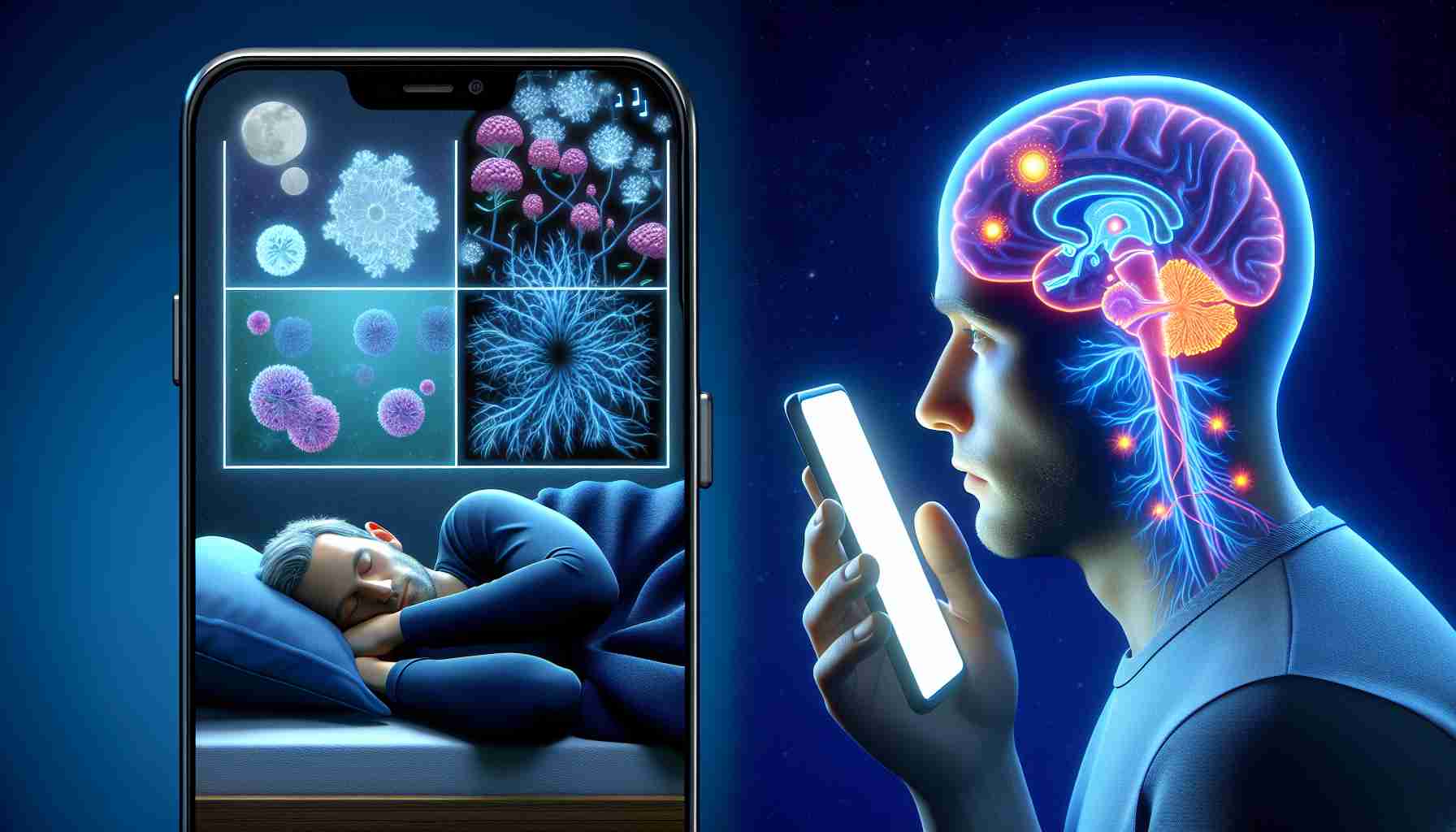A recent study revealed that using a smartphone without a blue light filter significantly reduces melatonin levels compared to reading with a filter or a paper book. Teenagers were able to restore their melatonin levels before sleep, unlike adults who experienced further reductions in this hormone. To maintain healthy sleep, it is recommended to avoid smartphone use in the hour leading up to bedtime.
With the increasing use of smartphones and other devices emitting artificial short-wavelength light, concerns about their impact on sleep have grown. These devices can disrupt the natural production of melatonin in the body. The primary goal of the new study was to determine whether blue light filters could mitigate these negative effects and compare the response of teenagers and adults to evening light exposure.
Melatonin is a hormone produced in the brain that regulates sleep-wake cycles. Its production is dependent on light exposure: melatonin levels rise in the evening in darkness, promoting sleepiness, and decrease in the morning when exposed to light, helping the body transition to a wakeful state. Melatonin plays a key role in synchronizing the body’s internal rhythms with the natural day-night cycle, ensuring healthy and uninterrupted sleep.
Research conducted by Christopher Hen from the Sleep, Cognition, and Consciousness Laboratory at the University of Salzburg found that the use of smartphones and other light-emitting screens in the late hours is becoming increasingly common among both teenagers and adults. Many questions remain regarding the impact of short-wavelength light on light sensitivity and melatonin level recovery time. The effectiveness of software blue light filters also remains unclear. Hen emphasized the importance of studying these aspects as they directly impact the daily lives of most individuals.
In the study, 68 men were involved and divided into two age groups: 33 teenagers (14–17 years old) and 35 young adults (18–25 years old). The participants were monitored for 14 days and spent three nights in a sleep laboratory, reading under different lighting conditions: using a smartphone without a blue light filter, with a blue light filter, and with a regular printed book.
The study employed a comprehensive method of sleep recording, polysomnography, to monitor the participants’ sleep. Additionally, melatonin levels were measured through saliva samples taken at various points in the evening and before bedtime. Participants also rated their subjective sleepiness on a standardized scale. To ensure the study’s rigor, participants maintained regular sleep patterns and avoided interfering factors such as medications, smoking, and irregular sleep schedules. The results indicated that reading on a smartphone without a blue light filter significantly decreased melatonin levels in both teenagers and young adults. However, teenagers restored their melatonin levels faster before sleep than adults. Using a blue light filter or reading a book helped reduce this melatonin suppression. Hen noted that teenagers likely have a higher melatonin secretion, which may explain their faster recovery, supporting the hypothesis of higher light sensitivity overall.
As we delve deeper into the realm of smartphone usage and its implications on melatonin levels, further insights emerge. While the previous article shed light on the differences between teenagers and adults in terms of melatonin level restoration, there are additional critical aspects to consider.
Key Questions and Answers:
- How does prolonged exposure to short-wavelength light affect overall sleep quality?
Prolonged exposure to short-wavelength light emitted by smartphones can disrupt the natural circadian rhythm by suppressing melatonin production. This disruption can lead to difficulties falling asleep, reduced sleep quality, and potential long-term health consequences. - What are the long-term effects of consistent late-night smartphone use on melatonin levels?
Consistent late-night smartphone use without blue light filters can lead to chronic melatonin suppression, affecting not only immediate sleep patterns but also overall health and well-being over time. - How can individuals mitigate the impact of smartphone use on melatonin levels?
Employing blue light filter apps, reducing screen brightness, and establishing a technology-free wind-down routine before bed can help minimize the negative impact of smartphone usage on melatonin levels and sleep quality.
Challenges and Controversies:
One of the key challenges associated with addressing the impact of late-night smartphone use on melatonin levels is the pervasive nature of technology in modern society. Balancing the convenience and utility of smartphones with their potential detrimental effects on sleep presents a complex challenge for individuals striving for optimal well-being.
Advantages and Disadvantages:
Advantages: The study sheds light on actionable steps individuals can take to mitigate the negative impact of smartphone use on melatonin levels. It underscores the importance of awareness and proactive measures to safeguard one’s sleep health.
Disadvantages: Ongoing research is needed to further elucidate the long-term consequences of chronic melatonin suppression due to late-night smartphone use. Additionally, the efficacy of blue light filters and other interventions warrants continuous evaluation in the face of evolving technology.
Related Links:
- University of Salzburg – Explore more research from the Sleep, Cognition, and Consciousness Laboratory at the University of Salzburg.
By continuing to probe the intricacies of late-night smartphone use and its effects on melatonin levels, we equip ourselves with knowledge to make informed decisions regarding our tech habits and overall well-being.
